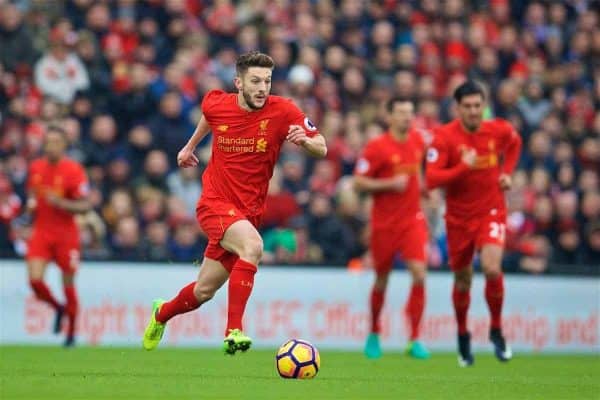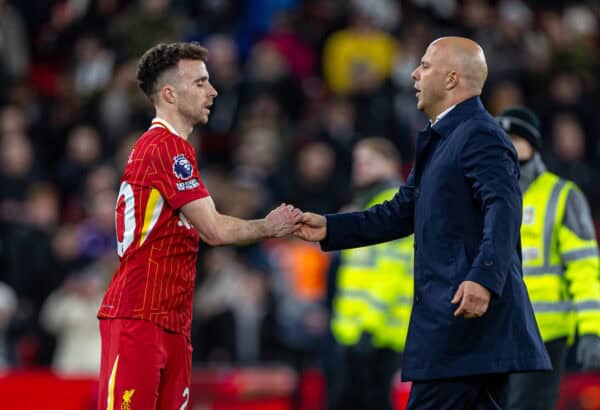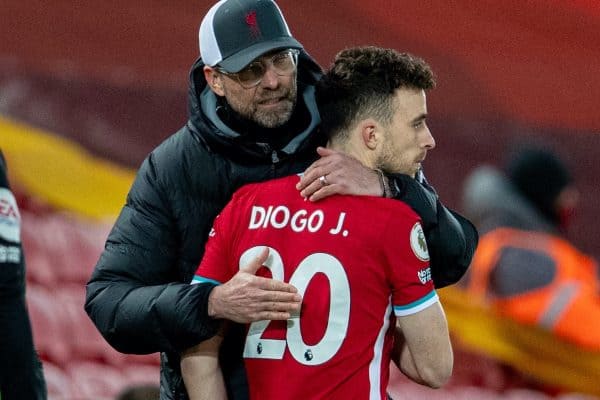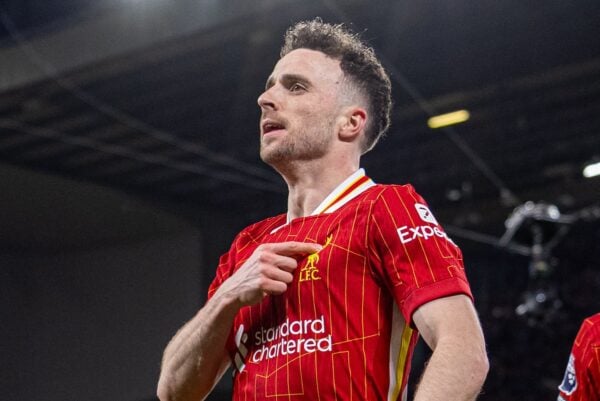The general consensus among Liverpool fans is that Adam Lallana should be playing in midfield, and not as part of the front three as he was for the Reds’ hugely disappointing defeat to Swansea City at Anfield.
A look at his raw stats for this season certainly backs this thinking up; the England international has scored seven goals and set up six more in his 13 games in midfield, and has just one assist to show for his eight appearances in other positions.
But before we form a posse to doorstep Jurgen Klopp and insist that Lallana has to play in the midfield, I thought it was worth a closer look at his stats to check if the marked difference in performance based on his position runs deeper than simply goals and assists.
A few notes on the numbers before we go on. The position information is taken from Transfermarkt, and should be taken with a pinch of salt, as it can never be 100% accurate when players move fluidly around the pitch and switch positions throughout a match. The stats themselves are for league games under Klopp since the German took charge, and I have excluded matches where Lallana played 30-minutes-or-less to ensure he had a reasonable amount of time in which to make an impact.
Let’s start with goalscoring and shot locations, and straight away we can see the difference it makes for Lallana to be in the midfield.

I would not assume that Lallana’s fine scoring record from central midfield will continue to the same level, as we can see (in the ‘xG Conversion’ column) that he has scored over twice as many goals from the shots he has taken than we should reasonably expect.
What is clear though is that the former Southampton man has more shots in the box on average when starting in central midfield, and this in turn obviously leads to him having a higher expected goals per 90 minutes average too.
It seems hugely counter-intuitive that a player would shoot more from inside the box when generally playing further back, but that is the case for Lallana, and this trend is not limited to his shots and goals contribution either.
The same is true of Lallana’s creativity as the below table shows. ‘Clear-cut chances’ are defined by Opta as ‘a situation where a player should reasonably be expected to score usually in a one-on-one scenario or from very close range’, so to create one a player has to put a teammate in for a top quality opportunity.
Think of Lallana’s assists for Can and Firmino against Watford (which is the only league match under Klopp where he has created two clear-cut chances); he put the ball on a plate in the six yard box and his teammates each had a simple chance to score.

The differences here are not as pronounced as they were in the shots table above, but it is once again clear that Lallana has been most creative when starting matches in central midfield for Klopp.
It’s also worth noting here that nobody in the Premier League currently creates chances more frequently from central midfield this season than Lallana has (for players who’ve played over 900 minutes in the position). The England international isn’t just surpassing his own creative performance when playing elsewhere, he’s outdoing the competition across the board too.
The final table focuses on Lallana’s output for attacking passes and touches in the opposition’s penalty box.

It’s not a surprise to see that Lallana’s completed final third pass tally rises when he starts further back, as he will have the whole final third to play passes into, and will spend more time on the ball too, particularly compared to when playing as a wide forward.
I would expect a player in an attacking midfield or ‘wing’ position to pass in the penalty area more often though, yet that isn’t the case here, and the penalty box touch numbers are simply remarkable.
To give them a little context, Ted Knutson’s player radars (which I’m sure you’ll be familiar with, though they’re easily found on Twitter if you’re not) have an outer boundary of four touches in the penalty box per 90 minutes played, meaning that Lallana is in the top 5% of attacking midfield performers across Europe’s big leagues for this in whichever position he has played for Klopp.

Yet the 28-year-old is making almost six contributions in the opposition box every 90 minutes when he plays in central midfield, and two of his four matches when he has hit double figures for this have been when Lallana has started in the midfield three. For the record, they were against West Ham, when he scored, and Burnley, when he had his record number of shots in the box for Klopp (five).
Whichever numbers you look at, it seems clear that Lallana contributes to attacks more and in better ways when starting matches in the midfield three.
The success of any football team is built on getting the most out of all 11 (or even 14) players, and rarely by focusing on just one of them, so we shouldn’t read too much into the fact that Klopp’s Liverpool have averaged 2.18 points per game with Lallana in midfield, and 1.71 when he has played elsewhere on the pitch.
When the likes of Jamie Carragher are calling Lallana “the best English player in the division” as he did last month it might make sense to make the most of that asset though, and the numbers here definitely point towards setting aside a midfield berth for Liverpool’s No. 20.

















Fan Comments